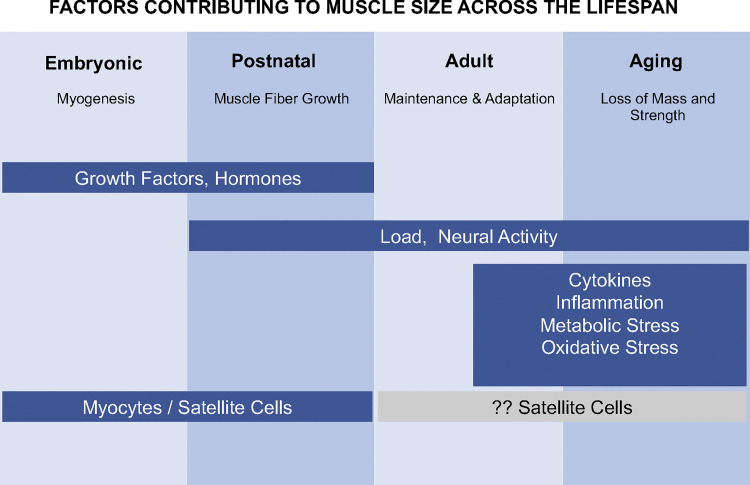Fig. 1.
Regulation of skeletal muscle mass throughout the life span. This diagram illustrates some of the critical factors that regulate skeletal muscle size at different life stages. At each life stage skeletal muscle undergoes specific changes that are regulated by different critical factors. During the embryonic stage growth factors, hormones and myocytes/satellite cells play a critical role in the formation and innervation of muscle fibers. During the postnatal stage, external loading and increased neural activation become important factors along with growth factors, hormones, and satellite cells in regulating increases in the length and cross-sectional area of muscle fibers. As adults, maintaining muscle mass and adapting to changes in external loading and neural activation become the dominant focus. With advancing age, decreases in external loading and activity, as well as, inflammation, increasing levels of cytokines, oxidative stress, and metabolic stress can lead to a decrease in muscle mass and strength.

